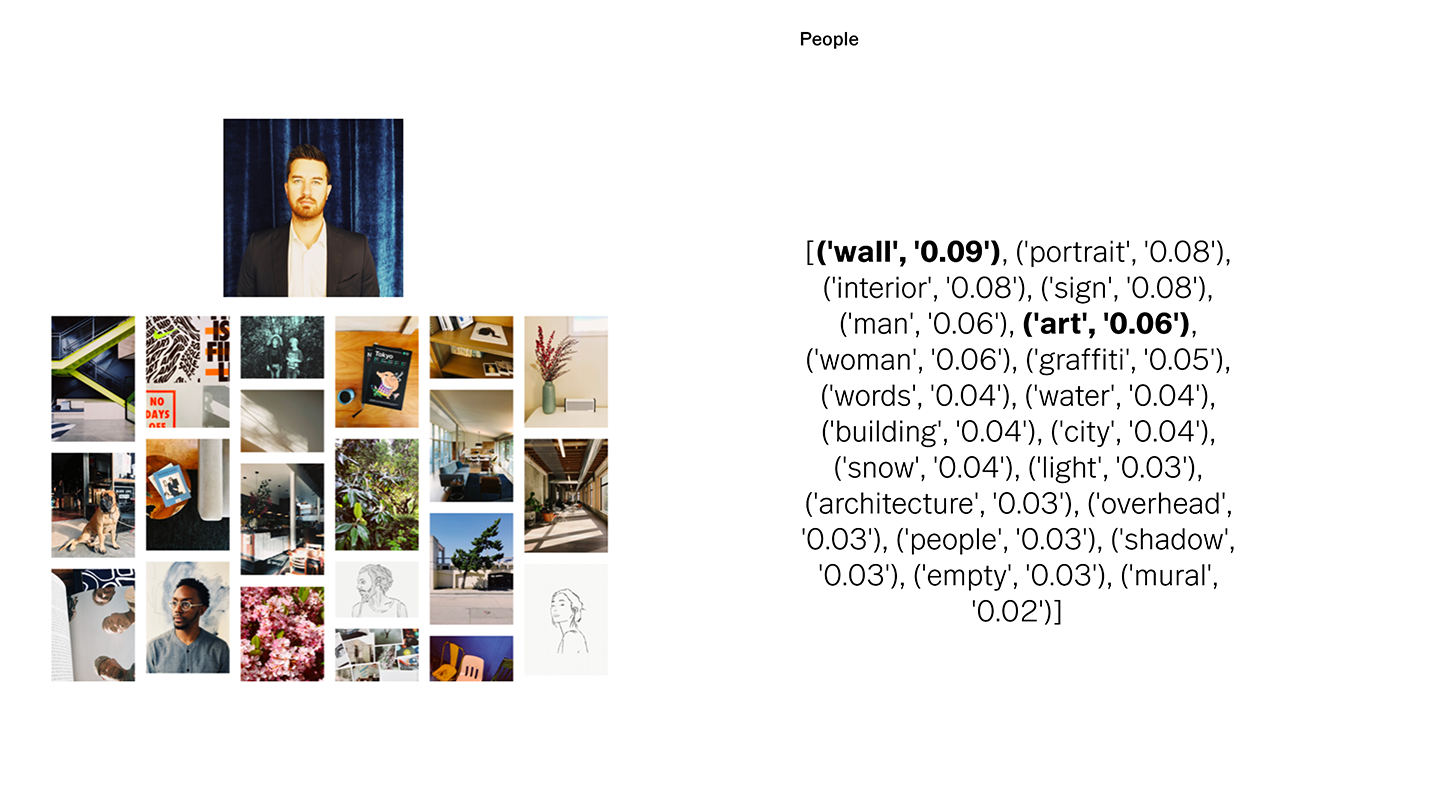Since launching in 2011, photo-sharing app VSCO has found a healthy niche among professional photographers and others looking to get feedback and improve their skills. On the surface, it offers an experience comparable to Instagram. But the idea is to share images as a way to connect with others and draw inspiration, not to increase your follower count or reach a certain number of likes, comments, or shares. (In fact, it doesn’t have comments or likes at all.)
“It’s really about that creative journey of becoming a better creator, and a place to find inspiration … and education,” says Joel Flory, cofounder and CEO of VSCO.
That goal led the company to its newest addition, Ava, a piece of machine-learning software that looks at every photo on the platform, identifies key attributes, and then uses that information to connect users with other creators who work in a similar style or often capture the same emotions. This tagging was previously done by humans at VSCO. Now Ava will handle the heavy lifting, using data from all the entire body of work on the service.

For instance, a photographer might enjoy capturing photos of sadness. Ava will be able to detect that in photos, see it as a theme across a person’s work, and then suggest other artists on the platform that shoot in a similar style that the poster might find interesting. “When you open the app every time, you feel that it’s there just for you,” Flory says.
How Ava Works
Ava coexists with another VSCO technology, a proprietary image-processing platform called Sens. Announced late last year, it’s a core piece of the company’s platform.
“If you ever played with Legos as a kid, Sens is that green building pad that everything’s built on top of,” Flory says. “This is what’s allowed us from a photo perspective to kind of push the boundaries.” For example, Sens has already allowed the company to roll out support for the high-quality RAW file format in iOS, as well as introduce short video clips within the app.
“What we’re most excited about is what we can do with it moving forward,” says Flory. “We’re really trying to think about what the future of expression is and how we can build for the culture creators.”
As for Ava, it stems from the company’s conclusion that it needed a smart way to look at the millions of photos that are posted on VSCO to learn not only about images but the artists behind them. Ava’s technology is doing that based on years of curation data from humans.
“What we’re doing is forcing Ava to look at photography from a very different perspective,” says says VSCO CTO Mike Wu. “It’s not just about subject matter. It’s also about the artistic view of how we look at photos.” VSCO’s human curators, he adds, have “looked at these photos and identified everything from feeling to themes to quality to more abstract concepts. We’ve taken that and had Ava train against it.”
And those human curators aren’t going anywhere. Instead, they’ll be helping Ava learn more. “Our team can actually go in and say ‘That’s not accurate’ and then Ava can continue to train against that updated data,” Wu says.
Identifying The Influencers
Another place VSCO sees Ava coming in handy is with influencer marketing. In an age where brands are looking for content to publish on Twitter, Facebook, Instagram and other social platforms, finding creators can be a challenging process. As the need for more content has risen, the budgets that those agencies and companies have to create that company has not, at least not at the same speed.
“That’s a problem that the industry is facing that we believe we can help solve,” says VSCO’s VP of marketing, Gene Paek. The company recently brought on Paek, who was the former head of business marketing at Instagram. He thinks VSCO’s technology, particularly Ava, can help match brands with the right content creators.
“So it’s not just matching you up with who we think might be the best creator for you, but if your brand or agency has specific requirements of what type of creator you need–one that shoots in this style or that captures happiness better than no other, leveraging Ava technology we are able to take your attributes and match you up with a creator that produces that type of content,” he says.

“In this day and age it’s all about your numbers and your popularity metrics, so it’s very hard to be discovered by a brand unless you have a big presence,” says VSCO cofounder and chief experience officer Greg Lutze. “Whereas with Ava, this allows your content based on what you like to shoot, what you’re good at, and the quality of that to rise up.”
Ultimately VSCO plans to offer a marketplace where brands will be able to indicate what they’re looking for, and VSCO will match them with a creator. Once matched, VSCO will handle pricing and make introductions, helping to work past some of the hiccups of negotiating with an independent creator on platforms like Instagram.
“When you look at our overarching vision and mission of empowering creators and helping people create with intent, we think Ava is going to help them in all aspects of that,” says Wu. “Everything from the creation process, to even potentially connecting them to people and companies they want to work with.”
[Correction posted 6/15/2017: The original version of this article misspelled Greg Lutze’s name and indicated that the Ava technology was built on top of Sens rather than coexisting with it.]
Recognize your brand’s excellence by applying to this year’s Brands That Matter Awards before the early-rate deadline, May 3.
